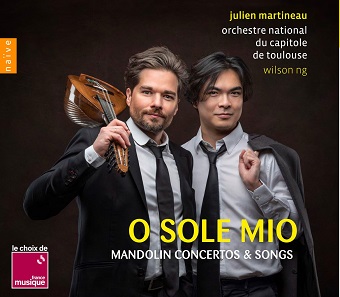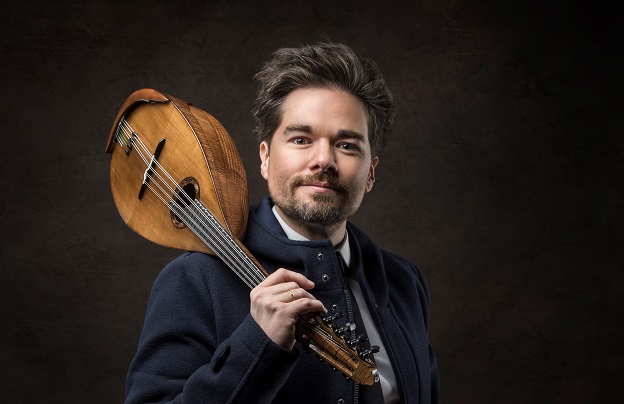What place does the mandolin occupy in today’s musical world, compared to when you started out? Are you satisfied?
The mandolin’s status has changed over the last twenty years, and it’s obviously a great source of satisfaction to see it more and more present on the big stages, on the radio or on television as a solo instrument.
It was long considered a marginal instrument, despite the tireless work of pioneers such as Christian Schneider in France, Ugo Orlandi in Italy, Marga Wilden-Hüsgen in Germany and Australian Keith Harris, to name but a few.
This evolution is truly the fruit of the work of several generations of performers. The opening of mandolin classes in European conservatories, combined with the emergence of the Internet and social networks, undoubtedly explain this new era. The richness of the repertoire and the significant increase in the musical level of mandolinists have enabled the public to discover an instrument that was previously known only through a few clichés.
Can you describe the mandolin in terms of sound and expression?
The mandolin has a unique timbre. Its crystalline yet round sound gives off an impression of authenticity, an inimitable blend of elegance and picturesque simplicity that you’d find walking through the streets of a small Sicilian village.
I often compare the mandolin to the violin, as both instruments have the same tuning and therefore virtually the same left hand. The mandolin has the same ability to sing with vocal inflections. It’s a plucked string instrument, but it tends towards the rubbed string!
What would you say to an 18-year-old to convince him or her to listen to mandolin music?
I’d tell him to listen to Vivaldi’s C major concerto RV 425 and then Calace’s 2nd concerto. I don’t think you can convince people too much with words in this field. You have to let the music do the talking, and choose an accessible introductory repertoire.
Has the mandolin evolved technically since the composers of the Baroque era?
The mandolin has evolved enormously, both in terms of instrument construction, with luthiery and strings, and in terms of playing technique. We’ve gone from a rather melodic, single-voice style, with short tones, to a polyphonic style combining detached short tones and continuous tremolo tones. Raffaele Calace (1863-1934) is arguably the composer who took the mandolin into a new dimension, in the same way as Paganini did for the violin or Liszt for the piano.
How do you intend to contribute to the repertoire, for example by commissioning new works, as you did for Karol Beffa’s Mandolin Concerto?
I think it’s very important to enrich the repertoire by commissioning works from excellent composers. We need oxygen in our repertoire, we need new blood. Karol Beffa is a perfect example of a composer who writes with the public in mind, while at the same time taking a long-term view of the history of music.
What do you expect from a contemporary composer?
I’m lucky enough to be working with such diverse and talented composers as Karol Beffa, Benoît Menut, Corentin Apparailly and Mathias Duplessy. I expect them to transport me into their universe, to enable me to move forward and renew myself. But in return, they expect me to guide them so that their music respects the natural language of the mandolin. We work closely together to ensure that the composition is as obvious as possible from an instrumental point of view, so that in the end the concert is as successful as possible.
But the grail is for the work to become a new standard, like Rodrigo’s Aranjuez Concerto or Max Richter’s recomposed 4 Seasons.
You’ve just released an album of concertos and songs with baritone Florian Sempey and the Orchestre National du Capitole de Toulouse (ONCT) conducted by Wilson Ng. The title of this album is that of the famous theme ‘O Sole Mio’. What is the concept behind it?
 For each album, I always try to imagine a program that reconciles form and content.
For each album, I always try to imagine a program that reconciles form and content.
The content is the repertoire. We’re lucky enough to have a marvelous literature for mandolin, which is still little explored. For each recording, I can choose only pieces that I consider to be masterpieces, whereas a pianist or violinist often has to think twice about venturing into territories served up by an already plethoric discography: that’s great freedom.
The form is the arrangement of the works. As I would imagine for a concert, in the album O Sole Mio I want to propose a menu with obvious or surprising connections between composers and eras. The program itself becomes a small creation.
I also hope to show that the mandolin can sing all emotions, from the simplest, as in the Neapolitan song, to the most profound, as in the second movement of Calace’s Concerto No. 1.

























